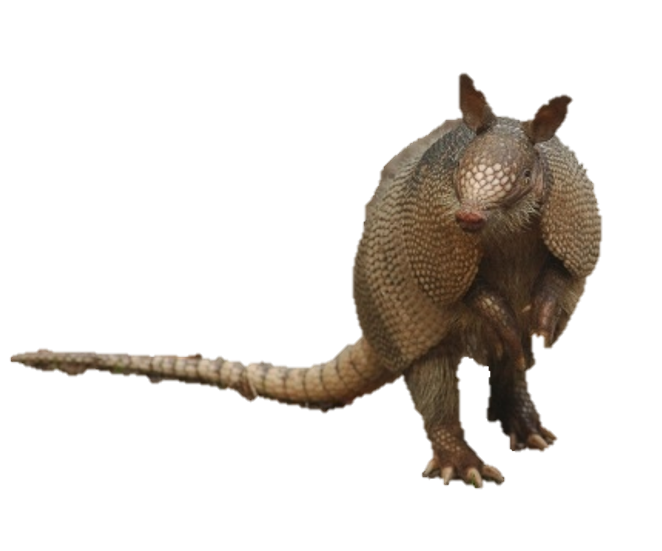Phone: 941-322-1000 | Email: [email protected]
General Mammal Release

Armadillos
Armadillos usually eat insects, grubs, and other invertebrates. However, their exact diets may vary across species. They live in a wide variety of habitats, ranging from forests to deserts to rainforests and more. You can find armadillos active at different times depending on the season. In the summer, they are usually active from twilight to early morning hours, but in the winter, they are only active during the day. Armadillos are probably best known for their defense mechanism of rolling into a ball and hiding in its armor. Forming only a few weeks after birth, their armor is made of plates of dermal bone covered in small keratin scales called scutes that cover almost every part of the armadillo except for its underside. Rolling into a ball puts physical stress on the armadillo, but it is not their only defense mechanism.
Armadillos like to dig burrows with their long claws to live solitarily. However, their digging talents can also be used to escape threats. Armadillos are also surprisingly fast for their size and can escape predators by fleeing into thorny patches that their predators can’t follow them into. They can also walk underwater, hold their breath for up to 6 minutes, and can swallow air to increase their buoyancy by inflating their intestines and stomach. Some armadillos will also jump 3 – 4 feet in the air when threatened. Armadillos are beneficial for the ecosystem by controlling pests and dispersing seeds.
Squirrels
Squirrels are found all over the world (except in Australia and Antarctica) and have over 200 different species. They can be identified by their bushy tails and timid behavior. Squirrels usually like to live in trees in wooded areas, but during winter they will hibernate in burrows. Squirrels also have four front teeth that are constantly growing to prevent their teeth form turning into nubs from chewing on nuts. Contrary to popular belief, squirrels do not only eat nuts, but also fungi, fruits, eggs, small insects, and small animals.

